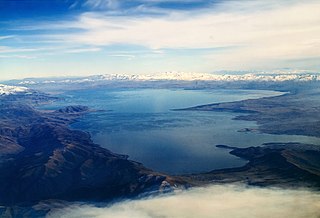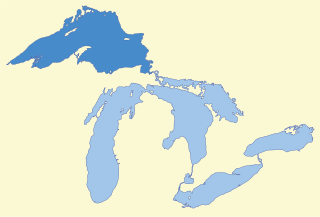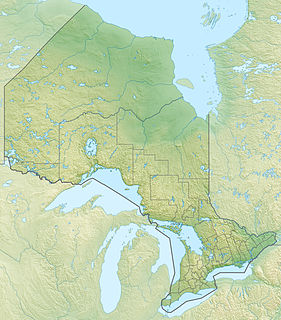| Daisy Lake | |
| Lake | |
| Country | Canada |
|---|---|
| Province | Ontario |
| Region | Northeastern Ontario |
| District | Thunder Bay |
| Municipality | Greenstone |
| Elevation | 325 m (1,066 ft) |
| Coordinates | 49°45′15″N87°29′09″W / 49.75417°N 87.48583°W Coordinates: 49°45′15″N87°29′09″W / 49.75417°N 87.48583°W |
| Mouth | Unnamed creek |
| - coordinates | 49°45′13″N87°29′16″W / 49.75361°N 87.48778°W |
| Length | 500 m (1,640 ft) |
| Width | 200 m (656 ft) |
Daisy Lake is a small lake in the Lake Superior and Lake Nipigon drainage basins in the amalgamated town of Greenstone, Thunder Bay District in northeastern Ontario, Canada.

A lake is an area filled with water, localized in a basin, that is surrounded by land, apart from any river or other outlet that serves to feed or drain the lake. Lakes lie on land and are not part of the ocean, and therefore are distinct from lagoons, and are also larger and deeper than ponds, though there are no official or scientific definitions. Lakes can be contrasted with rivers or streams, which are usually flowing. Most lakes are fed and drained by rivers and streams.

Lake Superior, the largest of the Great Lakes of North America, is also the world's largest freshwater lake by surface area, and the third largest freshwater lake by volume. The lake is shared by the Canadian province of Ontario to the north, the U.S. state of Minnesota to the west, and Wisconsin and the Upper Peninsula of Michigan to the south. The farthest north and west of the Great Lakes chain, Superior has the highest elevation of all five great lakes and drains into the St. Mary's River.

Lake Nipigon is the largest lake entirely within the boundaries of the Canadian province of Ontario. It is part of the Great Lake drainage basin.
The lake is about 500 metres (1,640 ft) long and 200 metres (656 ft) wide, lies at an elevation of 325 metres (1,066 ft), and is located about 8 kilometres (5 mi) north of the community of Jellicoe on Ontario Highway 11. The primary inflow is an unnamed creek at the east, and the primary outflow is an unnamed creek at the west, which flows through Morham Lake to the Namewaminikan River, a tributary of Lake Nipigon.
King's Highway 11, commonly referred to as Highway 11, is a provincially maintained highway in the Canadian province of Ontario. At 1,784.9 kilometres (1,109.1 mi), it is the second longest highway in the province, following Highway 17. Highway 11 begins at Highway 400 in Barrie, and arches through northern Ontario to the Ontario–Minnesota border at Rainy River via Thunder Bay; the road continues as Minnesota State Highway 72 across the Baudette-Rainy River International Bridge. North and west of North Bay, Highway 11 forms part of the Trans-Canada Highway. The highway is also part of MOM's Way between Thunder Bay and Rainy River.

